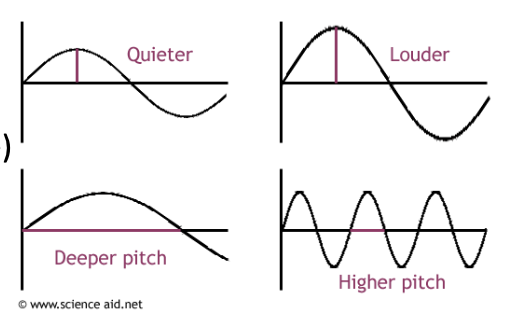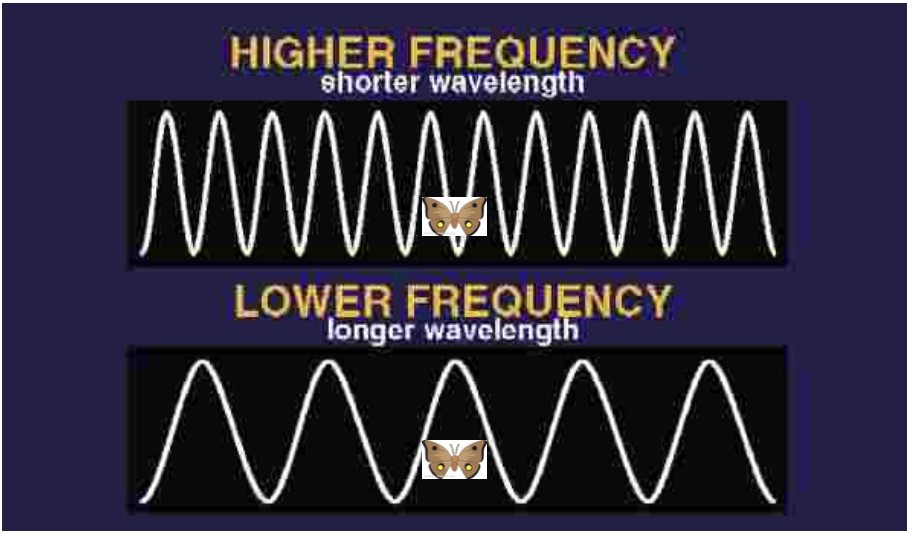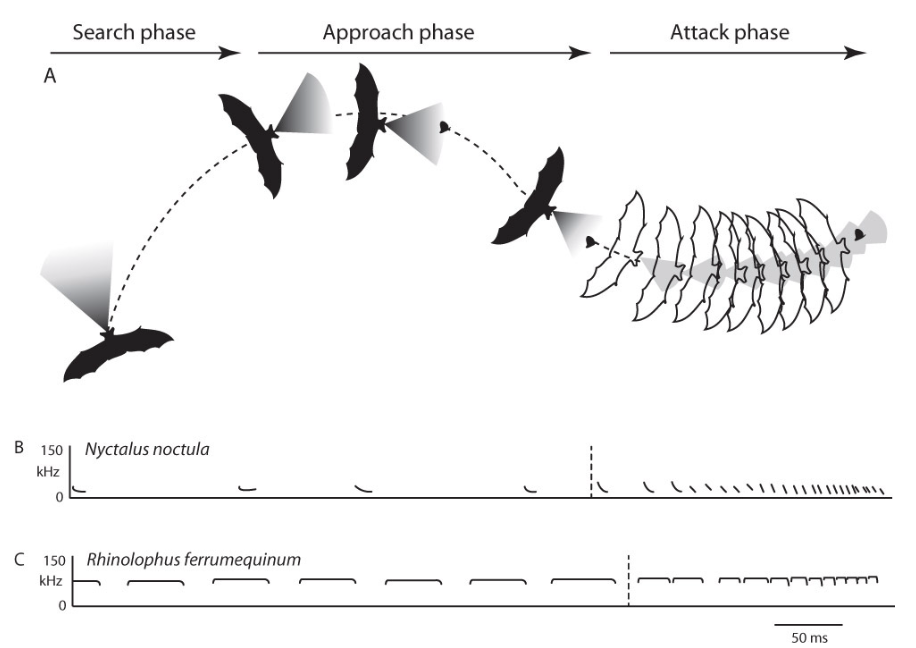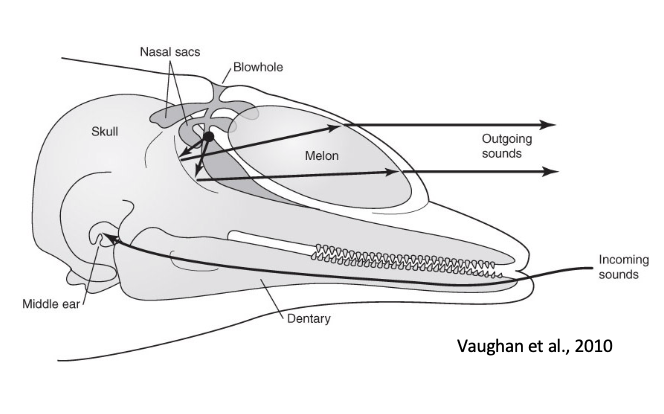Lec 21 - Echolocation
1/27
There's no tags or description
Looks like no tags are added yet.
Name | Mastery | Learn | Test | Matching | Spaced |
|---|
No study sessions yet.
28 Terms
Echolocation
Navigation by sound. High frequency sounds are emitted to gain information about the surrounding environment from the returning echo, interpreted from sound waves.

High frequency
Greater than 20 kHz
Hertz
1 cycle/second
kHz = 1000 cycles/second
Cycle
1 wavelength

Bats echolocation frequency range
8 kHz-215 Khz
Human sound frequency range
20 Hz - 20 kHz
Vertebrate groups that echolocate
Oil bird & cave swiftlets
Bats
Cetacea
Pinnipeds
Rodents
Tenrecs & shrews
Tenrec echolocation
By tongue clicks 5-17 kHz.
Environment assessment in fruit bats
Do not echolocate and are dependent on vision and smell. Vision involves interpreting information from energy received as light waves.
Environment assessment in all other bats
Vision, smell, and hearing in the form of auditory echolocation. Hearing involves interpreting information from energy received as sound waves. They can operate in the darkness (frees bird competition) and navigate in caves protecting nurseries. Echolocation is used in mother—young identification as well.
How do bats echolocate?
Sound produced in voice box
Sound emitted through nose or mouth
Sound pulses transmitted through, scattered by, or reflected back.
When reflected, returning sound is interpreted.
Mouth adaptations of bats for echolocation
Funnel shaped mouth to direct sound.
Mouth aligned to flight path.
Nose adaptation of bats for echolocation
Nose aligned to flight path.
Emit sound through nostrils with mouth closed
Distance between nostrils determines interference patterns
Echolocation calls can be described in terms of:
Frequency
Harmonics
Intensity (signal strength)
Time (duration, repetition)
Why are bat echolocation frequencies so high?
Short wavelength detect small objects better. High frequencies attenuate rapidly, are unique in the environment, and are easily directed.

Harmonics of echolocation
Base frequency that is lower but can get higher. This can be beneficial in rich environments where different frequencies can detect different textures and sizes of objects. Harmonics help to distinguish between near and far objects, the closer the object the more similar the return time echo from the harmonics.
Intensity of echolocation
Measure of sound pressure, visualized by the amplitude of sound waves. Bats tend to be louder in open environment and quieter in complex environments.
What are adaptations bats have to avoid self-deafening?
Muscles of inner ear well developed
Bones housing middle and inner ear insulated from the rest of the skull
Ears tuned to incoming echoes only
Time of echolocation
When a bat takes insects in flight, the frequency and characteristics of echolocation pulses vary depending on go the bat is in search, approach, or terminal/attack phase.

Interpreting echolocation bats
Search - low rate of repetition but doing it a lot. High duty cycle.
Approach - transition to high repetition rate. Time between call and echo decreases. Low duty cycle. Rely on Doppler shift and tight attack.
Termination
Doppler shift
a change in sound frequency of an echo relative to the original signal caused bu movement of one or both objects.
Low duty cycle approach
Produce signals small percentage of time
Do not broadcast and receive signals simultaneously
Produce short duration, broadband, downward FM calls
Present in most bats and in cetaceans
More basal condition
High duty cycle approach
Produce signals larger percentage of time
Produce pulses and receive echoes simultaneously
Produce long duration, narrowband, CF calls; short periods of silence
Doppler-shifted echoes of prey relative to background
Sensitive to amplitude and frequency shifts generated by the wings of fluttering insects, against cluttered backgrounds
Required evolution of sophisticated neurobiological specializations
Wing shape bats
Aspect ratio: proportion of wing length to width
Wing loading: ratio of body mass/surface area of the wing.
Open spaced wing shape
Speed and endurance
High aspect ratio (long, narrow wings)
High intensity (loud), low frequency FM call, CF calls
No harmonics
Dense space wing shaped
Maneuverable
Low aspect ratios (short and wide)
Low intensity, high frequency FM pulses
Cetacean echolocation
Low frequency (long distance), infrasonic for infraspecific communication.
The skull-vibration enabled bone conduction mechanism and a pressure mechanism transmitted through soft tissues.
Bone conduction is the predominant mechanism
How do Odontocetes echolocate?
Air in lungs shunted through sinuses and nasal systems.
Air squads out, loud
Melon (oil & fat filled structure) focuses sounds
Sound received by dentary
Asymmetric skylls
Tympanic bullae not fused, insulated by sinuses filled with oil.
